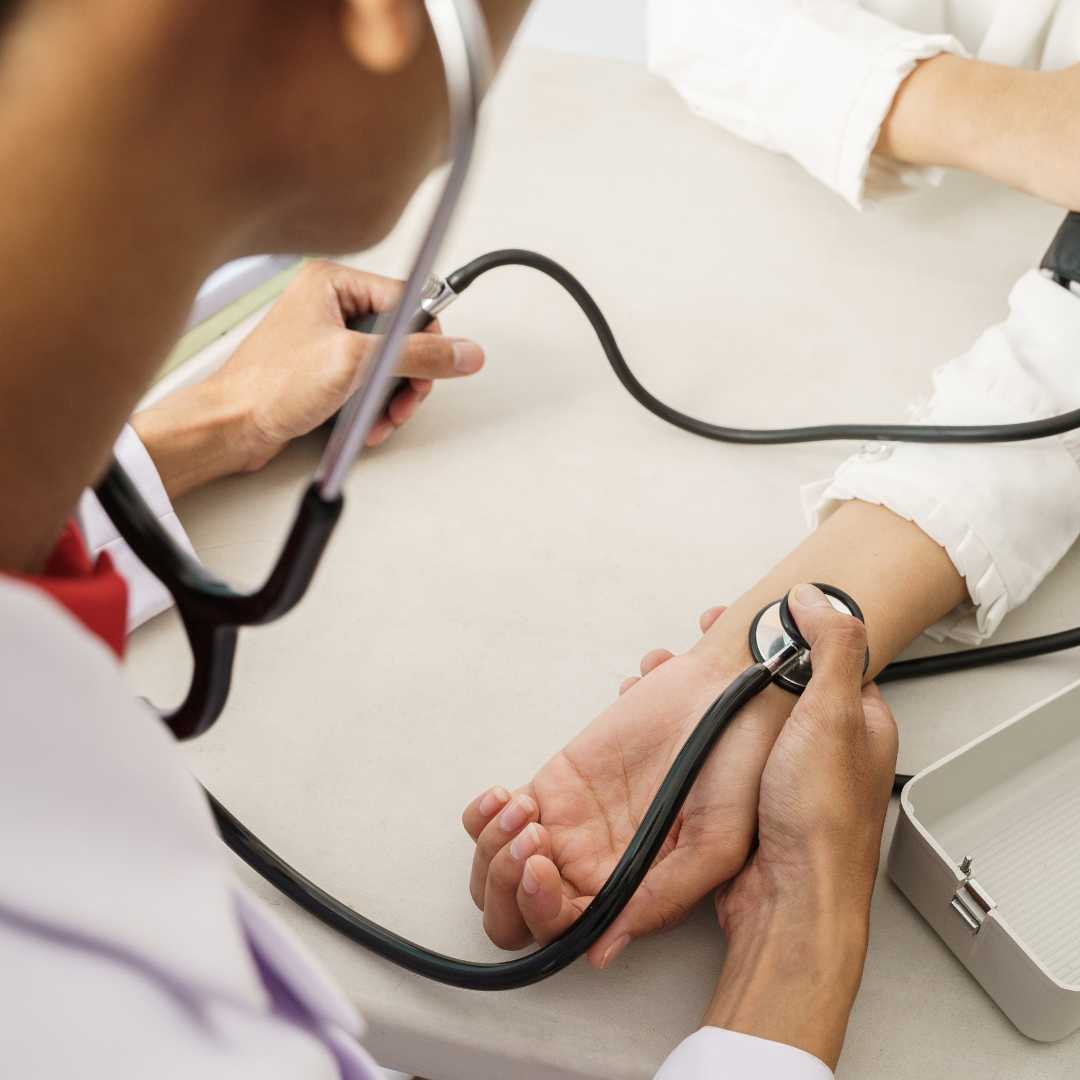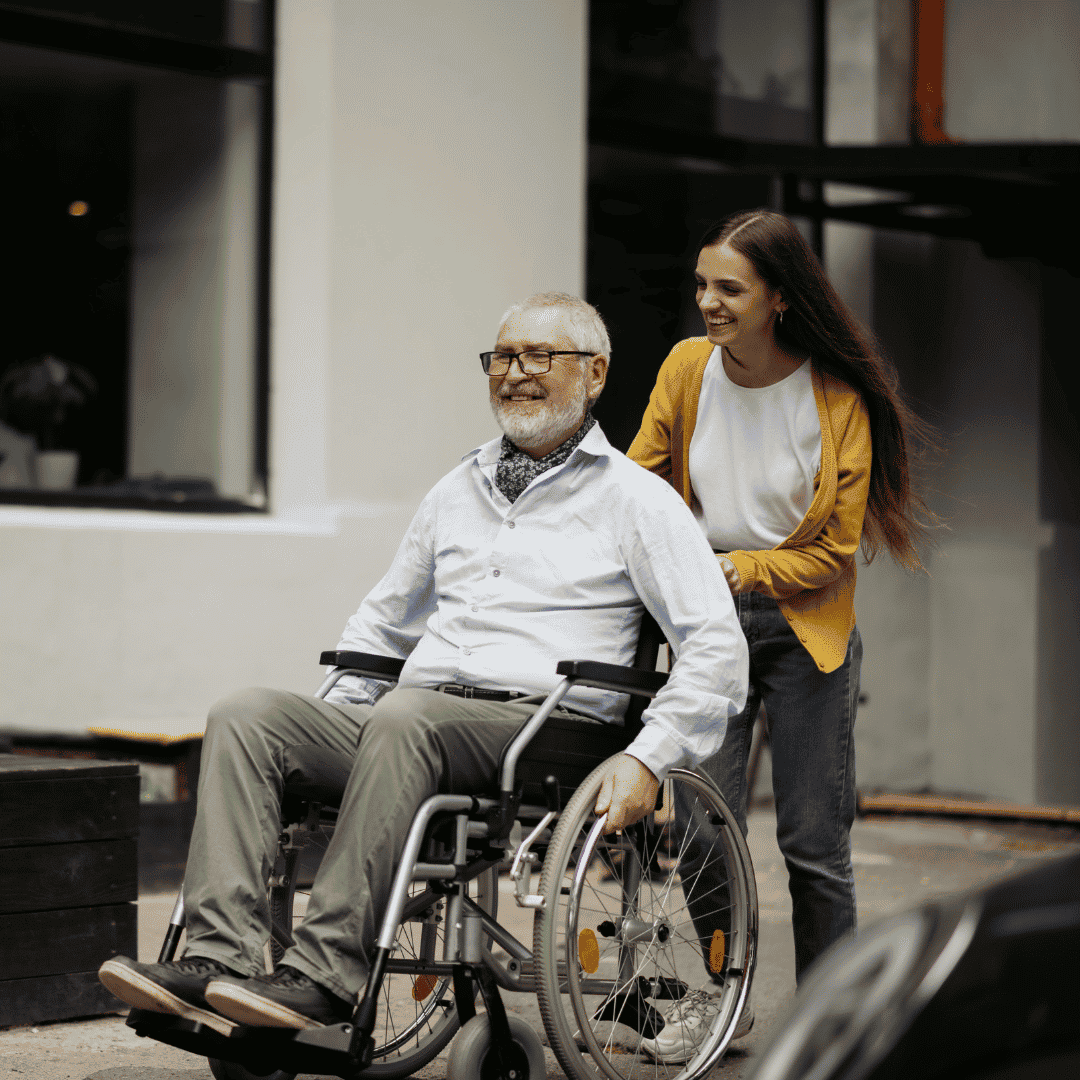
Reclaim Your Life With Top Rehabilitation Centers Abroad
Going on a journey to recovery after an injury, illness, or surgery can be one of the most challenging yet rewarding experiences of a lifetime. Rehabilitation is the crucial bridge that helps individuals reclaim their independence, improve their quality of life, and return to their daily routines. It's a holistic process, often involving a combination of therapies tailored to specific needs, whether it's regaining movement, improving speech, or adapting to new ways of performing tasks.
For many, accessing timely and high-quality rehabilitation services locally can be a struggle due to long wait times, limited specialized facilities, or prohibitive costs. This is where the concept of medical tourism for rehabilitation comes into play. Imagine receiving world-class rehabilitation services in a serene environment, often at a fraction of the cost, while also experiencing a new culture. Medical tourism opens doors to advanced facilities, cutting-edge techniques, and highly skilled therapists globally, making a profound impact on recovery outcomes.
Whether you're recovering from a stroke, a spinal cord injury, a major orthopedic surgery, or require neurological rehabilitation, exploring options abroad can provide significant advantages. This guide will delve into the world of rehabilitation through medical tourism, answering your most pressing questions and helping you understand how to navigate this path towards a faster, more comprehensive recovery.
Why Choose Rehabilitation Abroad for Your Recovery Journey?
The decision to seek rehabilitation outside your home country often stems from a combination of factors, with cost being a primary driver. In many Western countries, intensive rehabilitation programs can be incredibly expensive, often exceeding insurance coverage or personal budgets. By opting for treatment abroad, patients can access comparable or even superior care at significantly lower prices, making longer and more comprehensive programs financially feasible.
Beyond cost, overseas rehabilitation centers frequently boast state-of-the-art technology, specialized programs not readily available at home, and highly experienced teams. For instance, some clinics in countries like Germany or Turkey are renowned for their neurological rehabilitation expertise, offering innovative therapies like robotics-assisted training or hydrotherapy that might be hard to find or have long waiting lists elsewhere. Shorter wait times are another crucial benefit, allowing patients to begin their recovery journey sooner, which is vital for optimal outcomes, especially in cases like post-stroke or post-surgical rehabilitation.
Moreover, the change of scenery and the opportunity to combine recovery with a vacation-like experience can have a profoundly positive impact on a patient's mental well-being and motivation. The privacy and anonymity offered by treatment in another country can also be appealing to some individuals. Many facilities in popular medical tourism destinations are designed with patient comfort in mind, providing a healing environment conducive to both physical and emotional recovery.
What Are the Top Destinations for Quality Rehabilitation Services?
Several countries have emerged as leaders in medical tourism for rehabilitation, attracting patients worldwide due to their combination of quality, affordability, and specialized care. These destinations have invested heavily in their healthcare infrastructure, often featuring JCI-accredited hospitals and clinics.
- Germany: Renowned for its cutting-edge neurological and orthopedic rehabilitation, Germany offers highly advanced facilities, often integrating robotics and innovative therapies. Their strict medical standards ensure top-tier care.
- Turkey: With its growing medical tourism sector, Turkey provides excellent value for money. It has numerous modern rehabilitation centers specializing in physical therapy, neurological rehab, and post-surgical recovery, often with luxurious amenities.
- India: A popular destination for a wide range of medical treatments, India offers high-quality rehabilitation services at significantly lower costs, particularly for neurological and orthopedic conditions, with many English-speaking professionals.
- Thailand: Combining world-class medical facilities with a reputation for hospitality and beautiful surroundings, Thailand is an attractive option for those seeking a more holistic and serene recovery experience.
- Costa Rica: Known for its natural beauty and wellness tourism, Costa Rica offers high-quality, personalized rehabilitation, especially for orthopedic and neurological conditions, often in a more relaxed environment.
These countries not only provide excellent medical care but also offer patients a supportive environment conducive to healing. Many clinics cater specifically to international patients, offering services like translation, assistance with travel logistics, and dedicated patient coordinators.
How Does Medical Tourism for Rehabilitation Work?
Navigating the process of medical tourism for rehabilitation can seem complex, but with the right guidance, it can be a seamless journey. It typically begins with thorough research and selecting a reputable medical tourism facilitator like PlacidWay. You'll discuss your specific rehabilitation needs, medical history, and recovery goals with them.
The next step involves an initial consultation, often remote, with a specialist at a chosen international clinic. You'll share medical records, diagnostic images, and any relevant reports. The international medical team will then assess your case and propose a personalized rehabilitation plan, outlining the types of therapies, duration, and estimated costs. This ensures transparency and allows you to make an informed decision.
Once you approve the plan, the facilitator will assist with all logistical aspects: visa applications, booking flights, arranging accommodation (often at or near the clinic), and coordinating airport transfers. Upon arrival, you'll begin your intensive rehabilitation program, with dedicated support throughout your stay. Post-treatment, the clinic will provide a comprehensive discharge report and recommendations for continued care, which can be shared with your local healthcare providers.
Is Rehabilitation Abroad Safe and Effective?
Patient safety and treatment effectiveness are paramount concerns when considering medical care abroad. Reputable international rehabilitation centers adhere to stringent safety protocols and maintain high standards of care. Many facilities are accredited by international organizations such as the Joint Commission International (JCI), which signifies they meet rigorous global benchmarks for quality and patient safety. This accreditation is a strong indicator of a clinic's commitment to excellence.
Furthermore, medical professionals in leading rehabilitation centers abroad are often internationally trained, highly experienced, and dedicated to continuous professional development. They utilize modern equipment and evidence-based therapeutic approaches, ensuring that patients receive the most effective treatments available. Before committing to a clinic, it's advisable to research their accreditations, read patient testimonials, and inquire about their success rates for conditions similar to yours.
The effectiveness of rehabilitation abroad is often enhanced by the intensive nature of the programs. Many international clinics offer more hours of therapy per day or week than typically available in some home countries, which can accelerate recovery. The multidisciplinary team approach, involving physical therapists, occupational therapists, speech therapists, neurologists, and psychologists, ensures a holistic and coordinated recovery strategy, leading to better overall outcomes.
What Should I Consider When Planning Rehabilitation Overseas?
Planning rehabilitation overseas requires careful consideration of several practical aspects to ensure a smooth and stress-free experience. First, research the visa requirements for your chosen destination well in advance, as medical visas can sometimes take time to process. Next, review your existing health insurance policy to understand what, if any, international medical care or travel insurance it covers. You may need to purchase supplemental travel insurance that specifically covers medical emergencies and rehabilitation.
Language can be a significant concern, so confirm that the clinic has English-speaking staff or offers translation services. Accommodation options should also be explored, especially if you're traveling with family or require specific accessibility features. Many clinics offer on-site accommodation or have partnerships with nearby hotels and apartments that cater to medical tourists.
Finally, consider the logistics of travel, especially if the patient has limited mobility or requires special assistance. Discuss transfer services from the airport to the clinic. Most importantly, plan for post-treatment follow-up care. Ensure you receive detailed discharge summaries, therapy recommendations, and contact information for your international care team to facilitate continuity of care with your local healthcare providers back home.
What is Rehabilitation and Who Needs It?
Rehabilitation, often simply called rehab, is a goal-oriented process that helps individuals achieve the highest possible level of function and independence after experiencing a debilitating event. It’s not just about physical recovery; it encompasses restoring cognitive, emotional, and social well-being as well. The approach is highly personalized, focusing on the individual's unique needs and challenges.
A wide range of people can benefit from rehabilitation. This includes:
- Stroke Survivors: To regain movement, speech, and cognitive function.
- Individuals with Traumatic Brain Injury (TBI): To improve cognitive skills, balance, and motor control.
- Spinal Cord Injury Patients: To manage paralysis, learn adaptive techniques, and maximize remaining function.
- Post-Surgical Patients: Especially after orthopedic procedures like joint replacements or ligament repairs, to restore strength and mobility.
- People with Chronic Pain: To manage pain, improve function, and learn coping strategies.
- Individuals with Neurological Disorders: Such as Parkinson's disease, Multiple Sclerosis, or cerebral palsy, to maintain or improve function and manage symptoms.
- Amputees: For prosthetic training and adapting to daily activities.
- Patients Recovering from Severe Illnesses: Like prolonged ICU stays or certain cancers, to rebuild strength and endurance.
Essentially, anyone whose physical or cognitive abilities have been significantly impacted by illness or injury and who aims to improve their functional independence can be a candidate for rehabilitation.
What Are the Main Types of Rehabilitation Services Available?
Different types of rehabilitation cater to specific needs, helping patients regain optimal function and independence. These services often overlap and are coordinated by a multidisciplinary team to ensure comprehensive care.
- Physical Therapy (PT): Focuses on restoring movement, strength, balance, and coordination. Physical therapists use exercises, manual therapy, and modalities (e.g., heat, cold, electrical stimulation) to alleviate pain and improve physical function. Examples include post-orthopedic surgery recovery, stroke rehabilitation to regain walking ability, and managing chronic back pain.
- Occupational Therapy (OT): Helps patients adapt to daily living activities (ADLs) and instrumental ADLs (IADLs) like dressing, eating, bathing, cooking, and managing household tasks. Occupational therapists assess functional limitations and provide strategies, adaptive equipment, and environmental modifications to enhance independence. They might help a stroke patient learn to button a shirt or a person with arthritis manage kitchen tasks.
- Speech-Language Pathology (SLP): Addresses communication disorders (like aphasia after a stroke), swallowing difficulties (dysphagia), and cognitive-communication issues. Speech therapists work to improve speech clarity, language comprehension, voice quality, and safe eating habits. This can be crucial for individuals recovering from neurological events or those with progressive neurological diseases.
- Cognitive Rehabilitation: This therapy is designed to improve memory, attention, problem-solving, and executive functions (planning, organizing) often affected by traumatic brain injury, stroke, or other neurological conditions. Therapists use specific exercises and strategies to retrain the brain and help individuals compensate for cognitive deficits.
- Cardiac Rehabilitation: A medically supervised program for individuals recovering from heart attack, heart surgery, or other heart conditions. It includes supervised exercise, education on heart-healthy living, and counseling to reduce risk factors and improve cardiovascular health.
- Pulmonary Rehabilitation: For individuals with chronic lung conditions like COPD or asthma, this program combines exercise training, education, and breathing techniques to improve lung function, reduce symptoms, and enhance quality of life.
- Vocational Rehabilitation: Helps individuals return to work or find new employment after an injury or illness that has impacted their ability to perform their job. It involves assessing work skills, job coaching, and connecting individuals with resources for career development.
- Pain Management Rehabilitation: A multidisciplinary approach to reduce chronic pain and improve function. It often combines physical therapy, psychological counseling, and medical interventions to help patients manage pain and increase their participation in daily life.
Each type of rehabilitation plays a vital role in a comprehensive recovery plan, allowing patients to address specific areas of impairment and work towards their individualized goals.
How Long Does a Typical Rehabilitation Program Last?
There's no one-size-fits-all answer to the duration of a rehabilitation program, as it is highly individualized. For instance, post-operative rehabilitation for a straightforward knee replacement might last a few weeks with outpatient therapy. In contrast, recovery from a severe stroke or spinal cord injury could require months of intensive inpatient and then outpatient rehabilitation, often spanning several phases.
Factors influencing the length of rehab include the nature and severity of the injury or illness, the patient's overall health and age, their motivation, and the specific goals set by the rehabilitation team and the patient. Intensive programs offered abroad might achieve faster progress due to more frequent and longer therapy sessions each day, but the total recovery timeline still depends on the body's healing capacity and neurological recovery.
It's crucial for patients and their families to have realistic expectations and to understand that rehabilitation is often a journey, not a destination. While intensive programs can kickstart recovery, continued exercise and adherence to home programs are often necessary long after the formal rehabilitation period ends to maintain and further improve functional gains.
What Are the Benefits of Intensive Rehabilitation Programs?
Intensive rehabilitation programs, often found in specialized clinics abroad, are designed to maximize recovery in a shorter timeframe through a concentrated approach to therapy. One of the primary benefits is the potential for significantly faster progress. Patients receive several hours of therapy per day, multiple days a week, rather than infrequent sessions, which can lead to quicker improvements in strength, mobility, and functional abilities.
These programs also often yield better long-term outcomes. The consistent and concentrated nature of therapy helps the brain and body adapt more effectively, capitalizing on neuroplasticity in the early stages of recovery. Patients learn new skills and movements more efficiently, solidifying these gains before compensatory patterns become ingrained. This high-dose approach can lead to a greater return to independence and a higher quality of life.
Furthermore, intensive programs typically offer highly personalized care within a multidisciplinary team setting. This means that physical therapists, occupational therapists, speech therapists, and other specialists work closely together, integrating their approaches to address all aspects of a patient's recovery holistically. Many international centers also provide access to cutting-edge technologies, such as robotic-assisted therapy, virtual reality systems, and advanced neurofeedback, which may not be widely available or affordable in a patient's home country. This innovative equipment can enhance engagement, motivate patients, and facilitate more efficient recovery.
What Does Rehabilitation Cost Worldwide? A Comparative Look.
The cost of rehabilitation is a major factor for many patients, and it can fluctuate wildly depending on the country, the type and intensity of the program, and the duration of stay. Generally, Western countries like the USA and UK have the highest costs, while popular medical tourism destinations offer more budget-friendly alternatives.
Below is a comparative table for estimated costs of common rehabilitation types (per week/month, depending on program structure), illustrating potential savings when considering medical tourism. These figures are approximate and can vary based on clinic, specific patient needs, and program inclusions (e.g., accommodation, meals).
| Country | Stroke Rehab (per month avg.) | Orthopedic Rehab (per month avg.) | Spinal Injury Rehab (per month avg.) |
|---|---|---|---|
| USA | $15,000 - $50,000+ | $10,000 - $30,000+ | $30,000 - $100,000+ |
| UK | £8,000 - £25,000+ | £5,000 - £15,000+ | £20,000 - £60,000+ |
| Germany | €10,000 - €30,000+ | €7,000 - €20,000+ | €25,000 - €75,000+ |
| Turkey | $5,000 - $15,000 | $3,000 - $8,000 | $10,000 - $30,000 |
| India | $4,000 - $12,000 | $2,500 - $7,000 | $8,000 - $25,000 |
| Mexico | $6,000 - $18,000 | $4,000 - $10,000 | $12,000 - $40,000 |
*Note: These are estimated ranges for inpatient or intensive outpatient programs and can vary significantly based on program intensity, duration, clinic reputation, and patient needs. Currency conversions are approximate.
As you can see, countries like Turkey, India, and Mexico offer substantial cost savings, often making world-class intensive rehabilitation more accessible and affordable for a wider range of patients.
Take the Next Step with PlacidWay
Ready to accelerate your recovery and reclaim your independence? Your journey to world-class rehabilitation is within reach. Explore top-rated international clinics, compare personalized programs, and get a free, no-obligation quote for your rehabilitation needs with PlacidWay. Let us help you plan a seamless and transformative medical travel experience, connecting you with the best care globally. Start your healing process today!










Share this listing